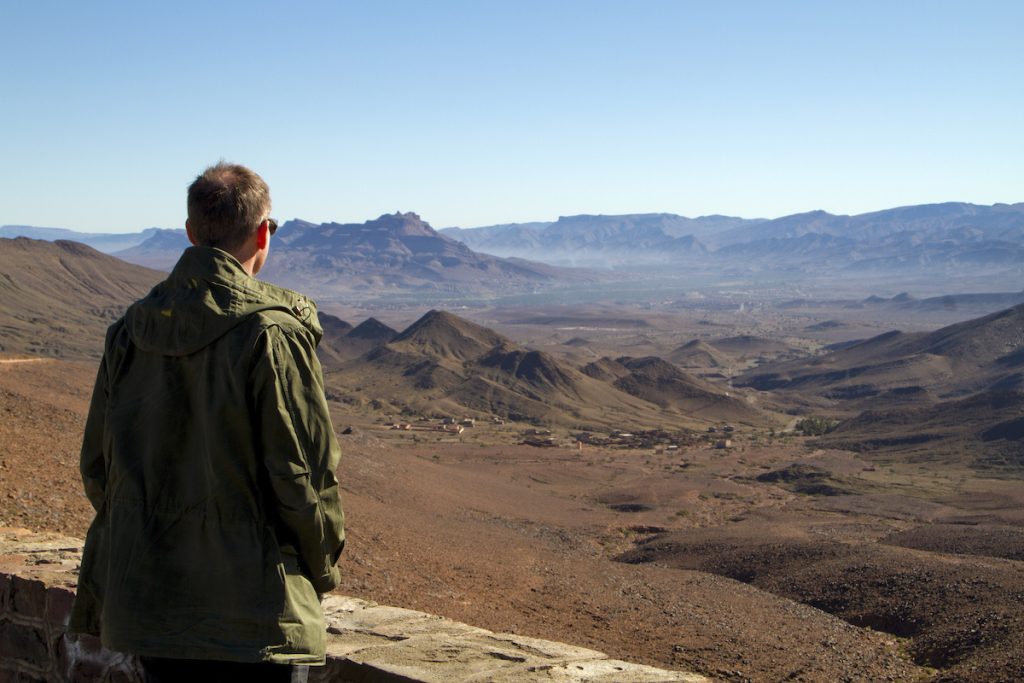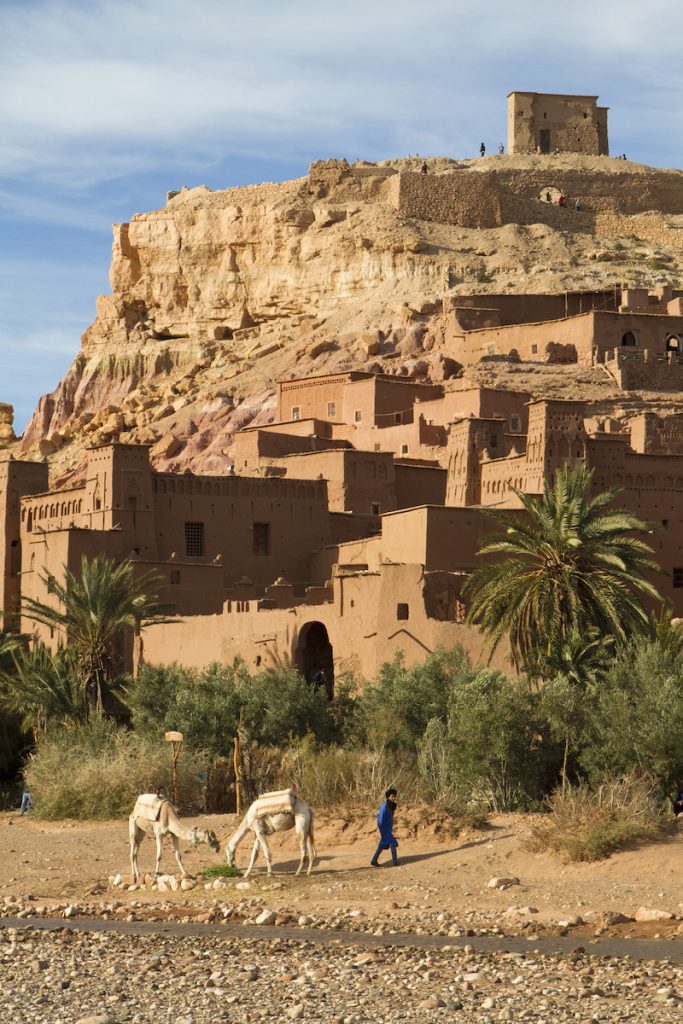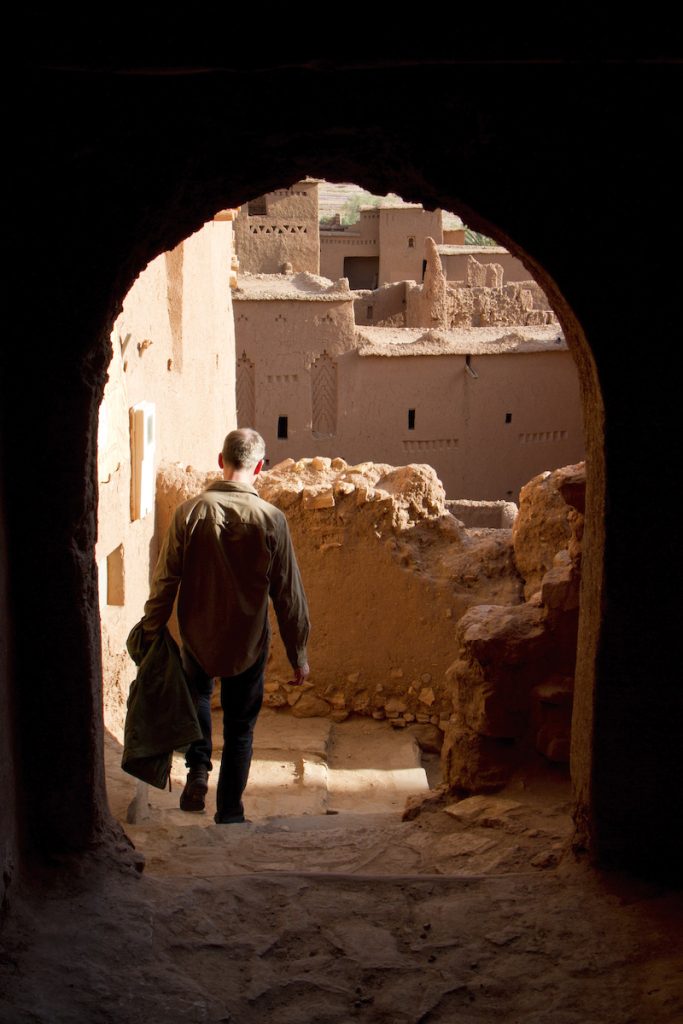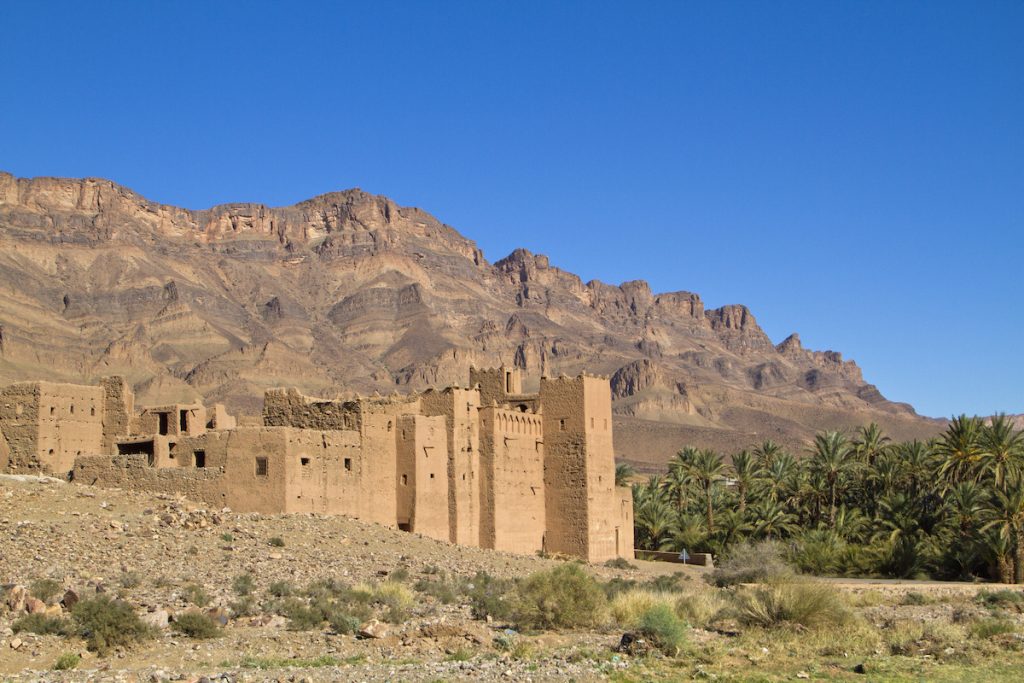
It was in the Atlas Mountains — and beyond — where we would find the Glaoui’s most enduring traces, and so we set out in a rented car and ventured into their traditional domain.
I decided to start at the fringes and work backwards, bypassing their stronghold of Telouet and driving straight to the gateway of the desert.
The Drâa Valley is the place where Morocco ends and the Sahara begins.
This deeply eroded valley formed a corridor through which exhausted caravans emerged from their desert crossing laden with trade goods.
The Ruhhal tribes rode their emaciated camels through emerald oases of palms and running water, and the narrow streets of mud-walled houses filled with the sound of shuffling feet, and with the trudge of shackled slaves dragging their chains.
The Drâa was also the route taken by the 16th century warriors of the Saadi Dynasty who emerged from the central Sahara to stop the colonizing advance of Ottoman Turks and Portuguese adventurers.
The Drâa ended at the oasis town of Ouarzazate, where the route wound into the High Atlas mountains, passing the Glaoui stronghold of Telouet before crossing the Tizi-n-Tichka pass to the plains, and the markets of Marrakesh.
Every caravan that passed this way paid a tribute to these increasingly powerful Lords of the Atlas, compelled by their mighty 77-millimetre Krupp cannon — the only one in Morocco outside the Imperial army — and by their many guns.
Photos ©Tomoko Goto, 2019



